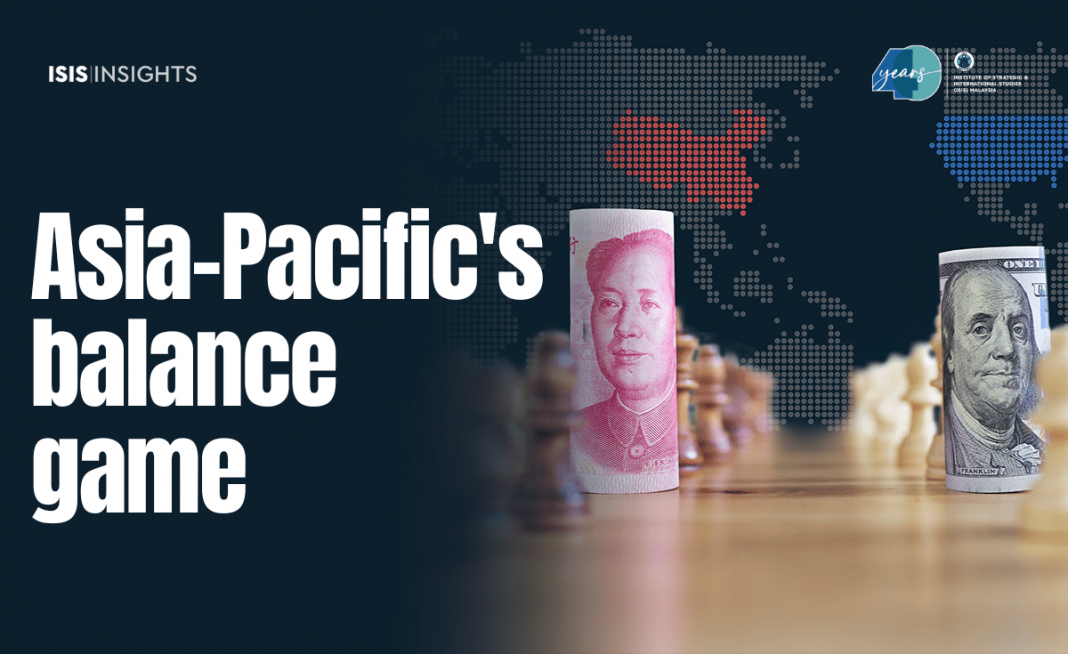Asia-Pacific has delivered prosperity to millions, can’t afford disruptions to trade
ASIA-PACIFIC is indispensable in the global trade and investment landscape, with the region driving much of the world’s economic growth over the past two decades. Nevertheless, several flashpoints amid tense geopolitical rivalries threaten to disrupt global trade and investment flows.
The United States-China rivalry has emerged as one of the most significant threats to global trade. The two powers are engaged in a series of disputes and increasingly forcing middle powers in the region to navigate the risks and benefits of engaging between the two sides.
The International Monetary Fund reported that the US-China trade tensions between 2018-2020 had reduced cumulative investments by 3.5%, GDP by 0.4%, and decreased overall employment by 1% across Asia-Pacific.
These effects were more pronounced among emerging open economies in the region, particularly in nations with higher debt-to-GDP ratio, a metric which spiked since the pandemic.
Their financial repercussions were also severe, with higher short-term costs from a rapid unwinding of financial positions and longer-term losses associated with higher opportunity costs of reduced trade diversification resulting in slower productivity growth and investment.
The US-China relations have deteriorated to the point that there is reason to worry about possible American sanctions against nations doing business with China. Such a move would have globally pernicious effects, which at a minimum will cause severe disruptions and maximum, economic devastation.
US retreat from globalisation
Geopolitical tensions have raised the prospect that national security concerns may trump the shared economic benefits of global investment flows.
As geopolitics become increasingly complex, nations must determine their degree of concern on becoming too dependent on the Chinese market, given the latter’s more aggressive stance in the South China Sea and growing influence in the region.
However, trade diversification for many middle-income nations is not always a straightforward solution, as many are heavily reliant on exports to China and will struggle to find alternative markets for their goods and services. Meanwhile, the US remains tepid about offering open market access, with global trade taking a backseat to domestic concerns.
The fragmented US political leadership amid myriad domestic issues suggests that any restoration of trade openness is no longer politically feasible. The US retreat from the Trans-Pacific Partnership (TPP) reminds us of the shift in rhetoric among American policymakers favouring protectionism. Even within the US-led Indo Pacific Economic Framework (IPEF), discussions on open market access are missing, falling far short of offering a reliable alternative.
Thus, middle nations are unlikely to limit Chinese market exposure if it means sacrificing growth and investment opportunities with China. Moreover, they run the risk of exacerbating regional tensions as limiting market access could be interpreted as a willingness to align with the Western sphere of influence, running the risk of punitive trade sanctions and exacerbating tensions.
Letting cooler heads prevail
Amid the US-China rivalry for geopolitical hegemony, the future of free trade and investment in the Asia-Pacific relies on the cool headedness of policymakers and a clear commitment to ensure proactive dialogue over military build-up. The former encourages understanding and compromise, while the latter can only lead to disaster.
The integrity of regional trade agreements, such as the RCEP and CPTPP, must be respected as only the rules-based trading order has the potential to reduce tensions. Therefore, all must agree to refrain from using economic coercion to limit trade and market access.
Should measures fail to assuage fears, countries in the crossfire must be prepared to engage in strategic dual engagement, where nations balance their engagement with both the US and China to benefit from the economic opportunities offered by both while managing and navigating geopolitical risks.
The ongoing rivalry is dynamic and subject to manifold geopolitical, economic and technological shocks. Thus, proactive dialogue and policies pursued by nations in the Asia-Pacific are crucial to reflect a measured and cautious stance to avoid turning a cold strategic rivalry into a hot conflict, resulting in a lose-lose situation for everyone.





